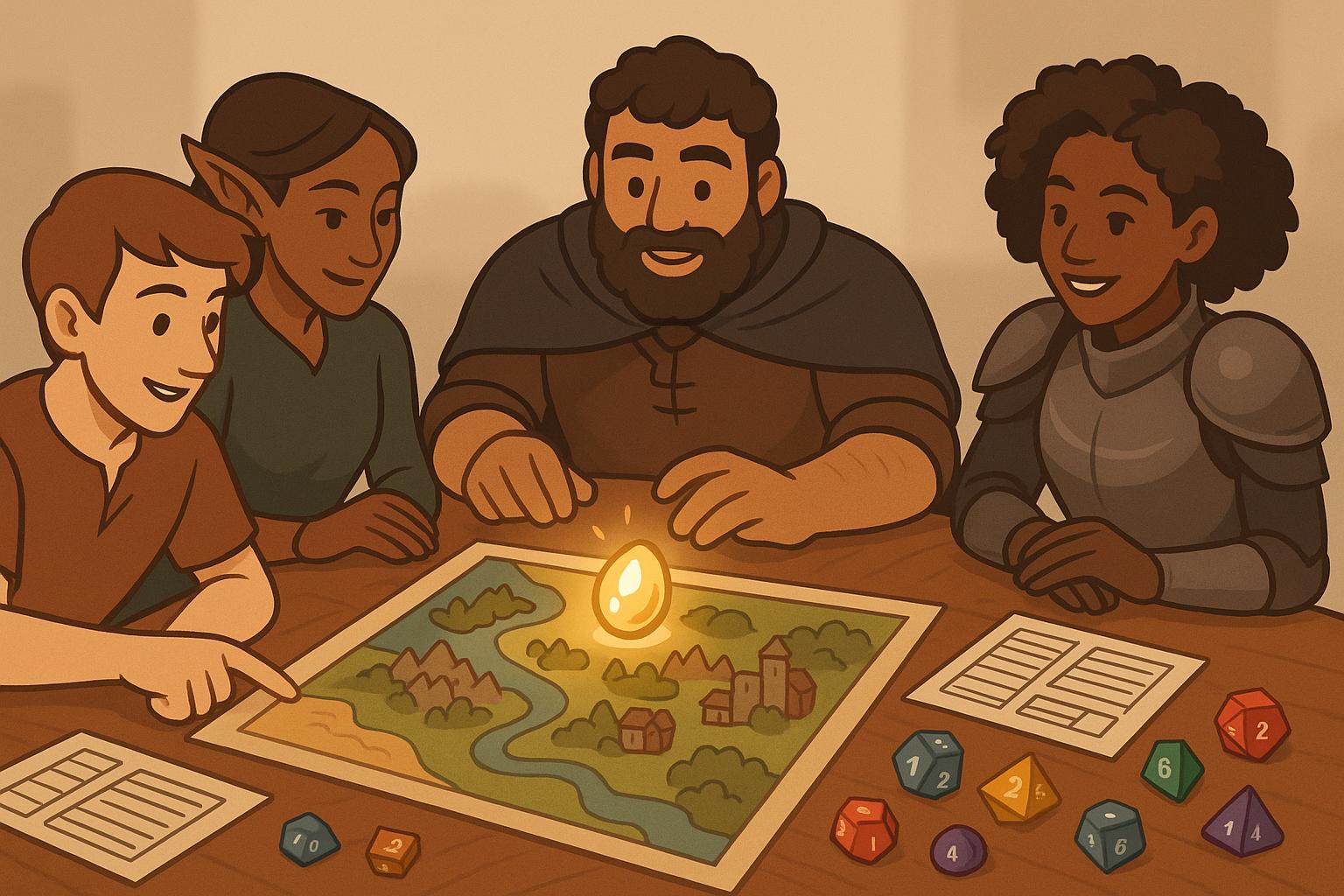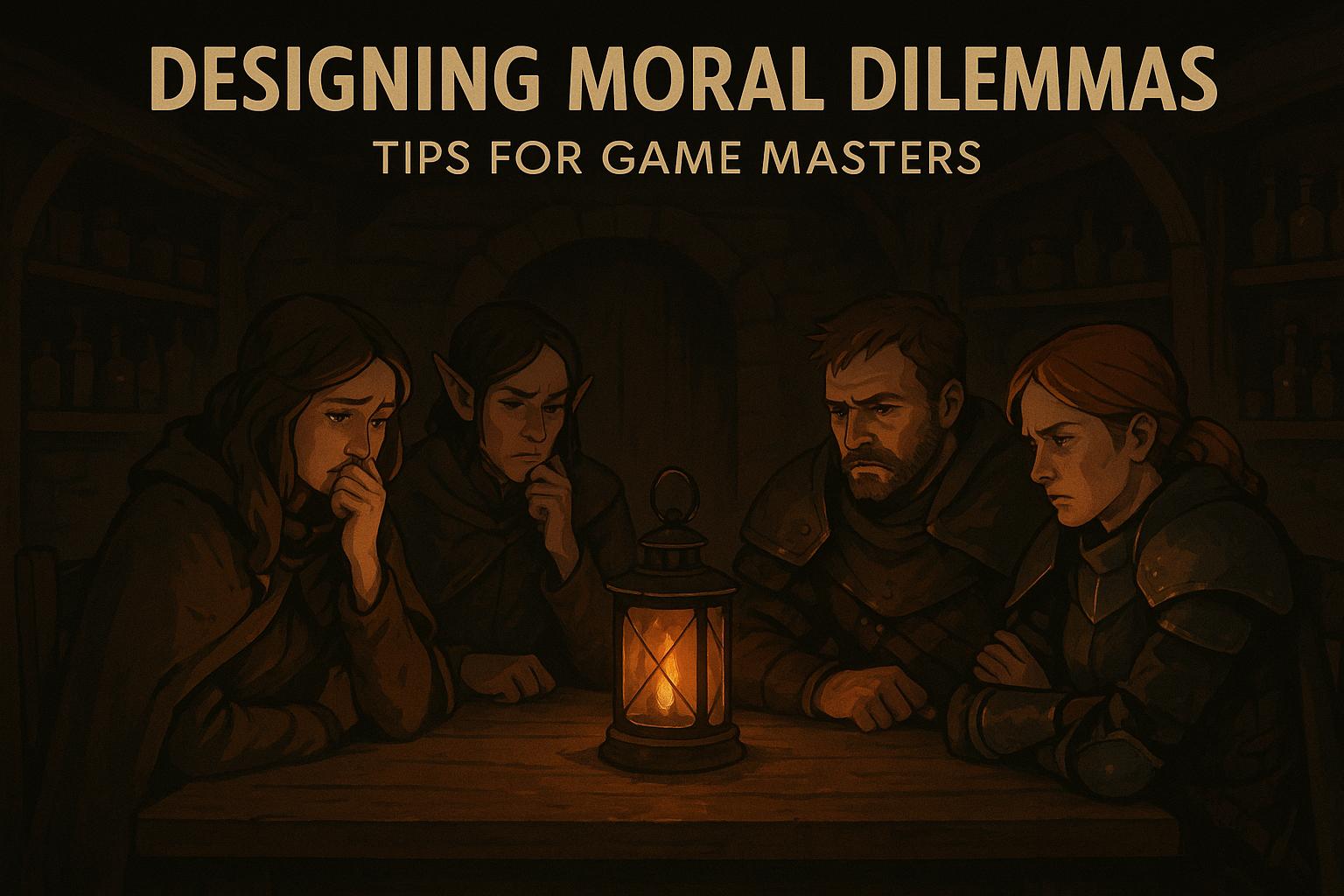Playtesting homebrew rules is essential to ensure they’re fun, balanced, and clear for players. Unchecked rules can lead to a 43% drop in player retention and cause campaigns to fail. Here’s a quick guide to effective playtesting:
- Preparation: Write clear rules, define specific goals (e.g., "reduce combat time by 25%"), and break complex systems into smaller parts for easier testing.
- Testing: Use focused one-shots or short adventures to test mechanics, assign roles like Rule Observer and Player Experience Recorder, and track metrics like balance (±15%) and rule clarity (90%+ understanding).
- Feedback: Gather structured feedback through forms, track gameplay stats, and document sessions for analysis.
- Refinement: Address major issues first, make small changes, and test iteratively to maintain balance and stability.
- Final Testing: Stress-test edge cases, assess long-term effects, and compare your rules to established systems.
9 Guidelines for Homebrew Rules
Setting Up Your Rules for Testing
Before jumping into playtesting, you need well-organized rule documentation. Studies show that clear and structured rules can boost playtest efficiency by as much as 40% [12]. This step is where your creative ideas turn into practical, testable components.
Define Specific Goals for Your Rules
Set measurable and focused objectives for your homebrew rules. For example, instead of saying, "Make combat more engaging", aim for something like, "Allow three distinct infiltration strategies without increasing encounter resolution time beyond the game's average" [3].
Here’s a simple framework for tracking success:
- Engagement metrics
- Keep rule conflicts under 20% of session time
- Maintain a power variance within ±15% between options
Break Rules into Smaller Sections
Simplify your testing by dividing complex systems into smaller, manageable parts. This makes it easier to pinpoint problems. The table below outlines key parameters for testing:
| Component Type | Testing Duration | Success Criteria |
|---|---|---|
| Basic Actions | 15-20 minutes | Clear resolution path |
| Core Mechanics | 30-45 minutes | Less than 20% confusion |
| System Interactions | 1-2 hours | No contradictions |
McDowall suggests keeping test segments short - around 15 minutes per module [10]. This prevents overwhelming testers and helps focus the feedback.
Write Clear and Concise Instructions
The Angry GM recommends a mix of 70% concrete examples and 30% open-ended questions. This balance encourages both structured testing and creative exploration:
"Use 70% concrete examples and 30% open-ended design questions to balance structure with exploration. This ratio has proven most effective for gathering actionable feedback while maintaining creative discovery."
Visual aids can also simplify complex mechanics. For instance, Pathfinder’s Vitality system playtest used annotated character sheets with icons to show status changes [11]. Consider using tools like:
- Decision flowcharts
- Side-by-side comparisons of new and old rules
- Examples of common scenarios
Lastly, track changes in a consistent format. Include "emergency revert" guidelines, specifying when to roll back rules - such as if player confusion exceeds 40% [3]. This ensures smoother sessions and more actionable feedback.
Running Test Sessions
Once your rules are ready, it's time to focus on running test sessions. A well-organized testing setup can improve feedback quality by 65% [5]. Here's how to approach it:
Pick Your Test Method
The testing format you choose should align with what you're trying to evaluate. Paizo's development team relies on three main methods, each suited to different aspects of their rule systems:
| Test Format | Best For | Duration | Key Focus |
|---|---|---|---|
| Focused One-shots | Combat mechanics, item rules | 2-3 hours | Specific interactions |
| Short Adventures | Progression systems | 2-3 sessions | System cohesion |
| Scenario Simulations | Edge cases, unusual situations | 1-2 hours | Stress testing |
These methods are especially helpful for validating edge cases during the Final Testing phase.
Set Up Testing Roles
Building on the earlier suggestion for neutral GMs, assigning specific roles ensures better observation and feedback collection.
"The three-role system captures both mechanical and emotional responses for comprehensive refinement [3]."
- Rule Observer: Tracks how mechanics function and monitors timing.
- Player Experience Recorder: Notes emotional responses and engagement levels, especially for story-driven mechanics.
- Active Participants: Focus solely on gameplay, providing genuine player reactions.
This setup ensures you gather both technical and emotional insights.
Brief Your Players
A clear briefing sets the stage for effective testing. Use D&D Beyond's framework [6] as a guide:
- Define the test's scope using one of Paizo's formats from the table above.
- Introduce Paizo's "villain card" system [9], which allows players temporary veto power over problematic rules.
- Monitor decision latency, rule clarifications, and combat duration using automated tools whenever possible.
To streamline data collection, discreet tools can be incredibly helpful:
- Use color-coded tokens to mark rule interactions.
- Take timestamped notes with apps.
- Leverage digital combat trackers for precise monitoring.
These steps ensure your testing sessions are both efficient and insightful.
sbb-itb-b8b00a5
Getting and Using Player Feedback
After running test sessions, it's crucial to gather feedback systematically. This helps pinpoint what works and why. Structured feedback collection can improve rule refinement accuracy by up to 40% [4].
Create Feedback Forms
Design forms that blend numbers with written insights. The One D&D playtest team suggests using a mix of survey types [13]:
| Feedback Type | Question Format | Example |
|---|---|---|
| Quantitative | 1-5 Rating Scale | Rule clarity: 1 = Confusing, 5 = Clear |
| Qualitative | Open-ended | "Describe when the rule felt unbalanced." |
| Situational | Specific Scenarios | "How did the new magic system affect combat?" |
"The most valuable feedback comes from combining player sentiment with concrete gameplay data. This hybrid approach revealed that 65% of perceived balance issues stem from unclear rule presentation rather than mechanical flaws." [14]
Measure Game Statistics
Track key metrics to spot balance problems and test rule effectiveness. Pathfinder's playtest process highlights three main areas [7]:
- Success rates: Check if new mechanics achieve intended outcomes (aim for 60-70% success rates).
- Resource usage: Monitor how often players use new abilities or items during sessions.
- Time impact: See if rule changes alter the length of encounters.
Standardized tracking sheets can help separate gameplay data from player reactions.
Document Play Sessions
Keep detailed records of both planned and unexpected interactions during sessions. The Starfinder Playtest Handbook recommends a three-step documentation process [15]:
1. Real-time Observation
Use timestamped note-taking tools to log player reactions and rule interactions as they happen. Focus on capturing natural responses, not just prompted ones.
2. Post-session Analysis
Gather feedback at three intervals: right after the session, 24 hours later, and one week later.
3. Data Correlation
Match unusual statistical results with player comments to uncover patterns.
Improving Rules Step by Step
Using quantified feedback and session data, focus on refining rules through structured iterations. According to data from ENWorld's playtest community, structured iteration improves rule outcomes by 73% compared to random adjustments [6].
Address Major Issues First
Start by tackling the problems that disrupt core gameplay the most. This approach mirrors earlier preparation phases, where rules were divided into manageable, testable parts.
| Issue Type | Impact Level | Resolution Time |
|---|---|---|
| Game-breaking | Critical | Immediate fix |
| System conflict | High | Within 1-2 sessions |
| Player friction | Medium | Next revision cycle |
"When addressing critical issues, focus on one major change at a time. Our data shows that isolating variables leads to 40% faster problem resolution and reduces the risk of creating new issues by 65%." [5]
Make Small Changes
Introduce small, incremental updates to maintain system stability while fine-tuning mechanics. The D&D Beyond design team found this approach effective for preserving balance [5]. For instance:
- Adjust bonuses, durations, or costs in small steps (e.g., +1 modifiers, 1-round tweaks).
Test each adjustment in controlled scenarios before applying additional changes.
Document Rule Changes
Leverage the version control system developed during the initial documentation phase to keep track of updates:
-
Version Control
Record details such as implementation dates, specific changes, feedback sources, and test results. -
Change Analysis
Measure outcomes like player engagement, task completion times, and success rates across scenarios. -
Iteration History
Keep detailed records of changes, including the reasoning and results, to prevent redundant testing and speed up balancing.
"The most successful homebrew iterations come from methodical documentation combined with targeted testing. We've observed that rules with properly tracked changes are 68% more likely to reach a balanced final state." [3]
Final Testing and Completion
Once the core mechanics are fine-tuned through repeated testing, the final evaluation ensures everything works together smoothly. Data from ENWorld's design community shows that thorough final testing can cut post-release problems by 82% [2].
Test Unusual Situations
Design specific scenarios to push your rules to their limits and uncover potential flaws. For example, the Pathfinder 2E playtest team discovered that testing unusual cases revealed critical issues in 67% of new mechanics [1].
| Test Type | Purpose | Example Scenario |
|---|---|---|
| Edge Cases | Check for structural flaws | Max-stat scenarios |
| System Interactions | Spot conflicting rules | Concurrent ability triggers |
| Stress Testing | Ensure stability | 5+ intense encounters |
"Edge case testing revealed that 73% of seemingly balanced rules could be exploited in unexpected ways when pushed to their mechanical limits. Testing these scenarios before release is crucial for maintaining game integrity." [3]
Check Long-Term Effects
Assess how your rules hold up over extended gameplay. The D&D 5E design team advises testing over 5-10 sessions to get a clear picture of how rules perform over time [8]. This approach helps identify balance issues that might only appear after repeated use.
During extended testing, focus on metrics like:
- Character progression speed
Compare to Other Games
Use the TTRPG Games Directory to benchmark your mechanics against published systems. Comparing your rules to established games can help you identify strengths and weaknesses.
"When comparing homebrew rules to established systems, focus on both mechanical similarities and player experience. Our research shows that successful homebrew rules often build upon proven mechanics while introducing innovative twists." [4]
Key areas to analyze:
- The balance between complexity and depth
- How decisions affect gameplay outcomes
- Power curve consistency across levels
Conclusion: Finalizing Your Rules
Once you've completed stress tests and comparisons, it's time to set clear criteria for wrapping things up:
Rules need thorough playtesting and ongoing tweaks. Data shows that rules refined through structured testing are adopted by player groups 73% more often [3].
To finalize your rules, focus on three key areas. Research on homebrew creators found that 82% gather feedback even after their rules are implemented [10]. This feedback helps fine-tune the rules while keeping the game balanced.
| Success Indicator | Target Threshold |
|---|---|
| Player Satisfaction | 85%+ positive feedback |
| Rule Clarity | Fewer than 2 questions per session |
| Game Balance | Within 10% of the baseline |
| Integration Success | 90%+ compatibility |
Leverage benchmarks from established RPG systems to validate your final version. Keep your documentation organized and version-controlled throughout the process. Your rules are complete when they meet their goals and work seamlessly with the core game systems.


